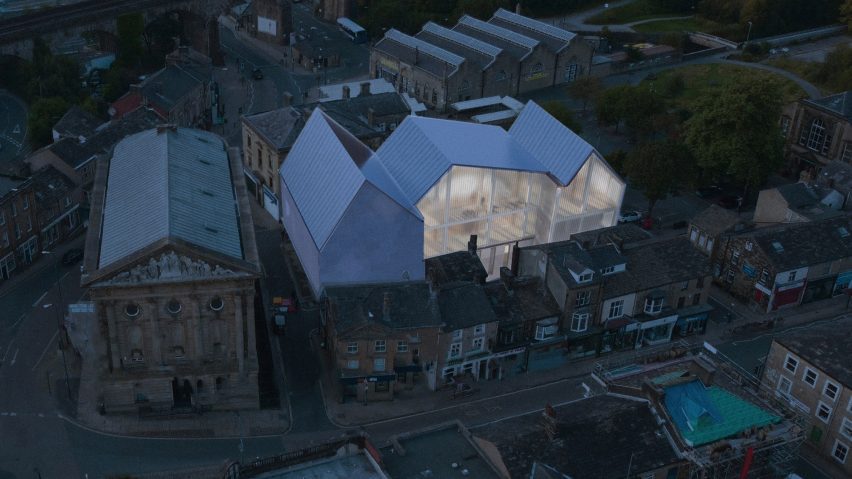
Manchester School of Architecture spotlights nine architecture and humanities student projects
Dezeen School Shows: a library inspired by the history of industrial weaving mills is included in Dezeen's latest school show by students at Manchester School of Architecture.
Also included is a sustainable cooking centre constructed using timber and rammed earth, and another focusing on repurposing found objects and materials.
Manchester School of Architecture
Institution: Manchester Metropolitan University and University of Manchester
School: Manchester School of Architecture
Course: BA Architecture and BA Humanities
Tutors: Anna Gidman, Dr Sam Holden, Curtis Martyn, Johnathan Djabarouti, Mike Daniels, Victoria Jolley, Matt Ault, Rob Hyde, Dan Newport, Amy Hanley, Vilius Petraitis, Dragana Opacic Wilkinson, Neil Allen, Nick Nilsen, Roxanne Kanda, Victoria Adegoke, Rachel Newton, Kasia Nawratek, German Nieva, Dr Demetra Kourri, Dr Angela Connelly, Matt Ault, Danilo Gomes, Siobhan Barry, Ian McHugh and Glenn Ombler
School statement:
"Our BA program at Manchester School of Architecture is a unique collaboration between the University of Manchester and Manchester Metropolitan University, enabling access to facilities at both universities.
"We offer a rich and diverse education experience, blending traditional architectural training with innovative approaches – we are delighted that our school maintained its fifth position in the prestigious QS World University Rankings for Architecture this year, which highlights the world's top-performing universities.
"We were also ranked second in the People and Planet University League for sustainable universities, which is reflected in our course where climate justice, sustainability and biodiversity issues are considered through all units.
"We are a large school with a BA of over 650 students.
"This is our strength as we can offer a lot of choice in the degree, from electives in humanities which align with staff research, through MSA Live projects where students choose to collaborate with real external partners in the northwest, and finally to our rich choice of ateliers, each with specific design approaches relating to varied research interests.
"Here BA3 students are taught by staff within vertical studios alongside postgraduate architecture and landscape architecture students.
"This year, we proudly launched our Foundation in Architecture course, widening access into the profession.
"We would like to thank all our wonderful home and international students, staff from both institutions, visiting tutors, speakers, practices, organisations and community groups who contribute to our school.
"We are grateful for your continued enthusiasm and support of our incredible academic community – we would not be MSA without you."
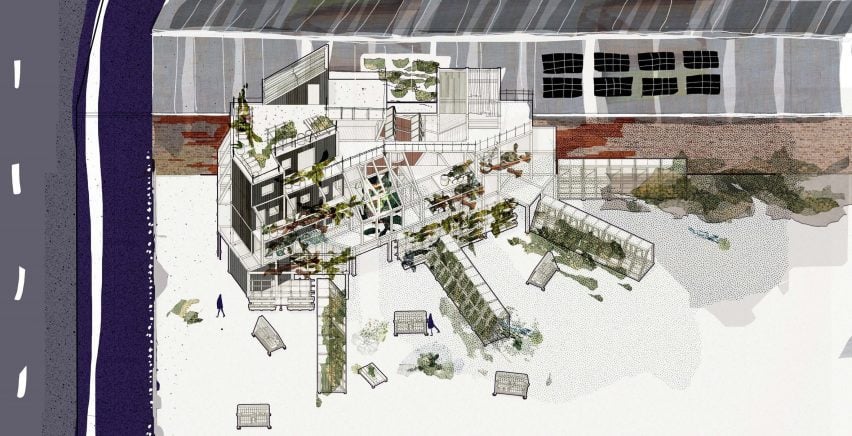
Food and I by Tianyi Gao
"Food and I spatialises time banking – its eight occupants maintain the building and grow crops in exchange for shelter, meals and knowledge, with any surplus food donated to the community in return for waste materials that are reused to maintain and expand the building.
"The atelier focuses on community economies in Sheffield, which are for mutual benefit, and are based around non-monetary actions.
"Some theorise that community economies herald an era of post-capitalism, infiltrating traditionally monetary dominated economics, however, non-monetary actions have been critical in maintaining contemporary capitalism (for example the rise in foodbanks) – in fact, they have always been a foundation of capitalism, most prominently through domestic labour.
"Our aim this year was to provide spatial form to community economies through architectural interventions – we thank all those we have collaborated with, including Heeley City Farm, Portland Works, REACH Homes, Foodworks and CADs, alongside the numerous experts and specialists who have supported our design studio."
Student: Tianyi Gao
Course: BA3 Architecture atelier
Tutors: Dr Sam Holden and Curtis Martyn
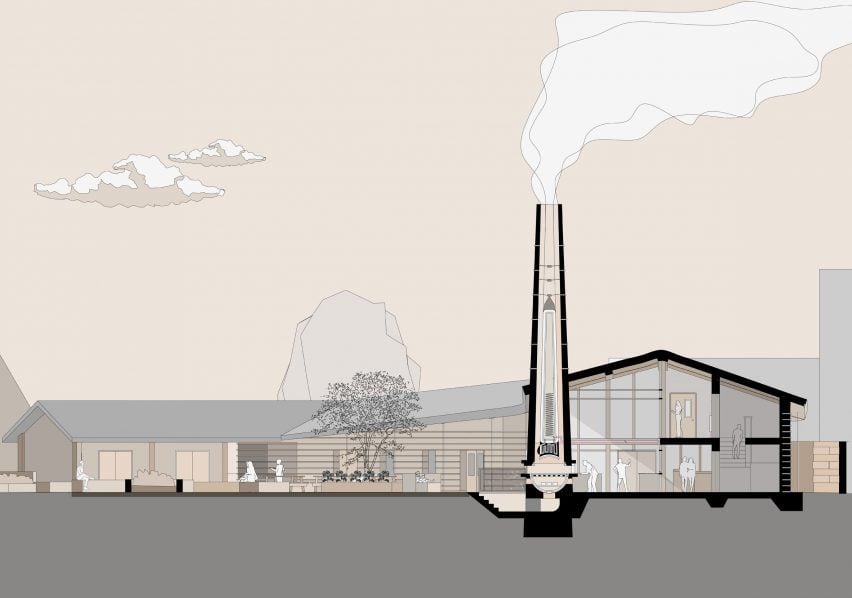
Integrative Design by Sion Lewis
"This series of prototypes aims to test and improve the constructability of the design.
"The tests took into account quantitative variables: speed of drying and weight as well as qualitative variables in the safety of prototype construction, deconstruction and re-use, climate performance and building and life safety of the design.
"The fragment detail is a 3D technical representation of a double-height space with a mezzanine construction using rammed earth, timber and slate.
"The elements come together to provide a stoic but light space that can adapt to changing external climates maintaining internal comfort for users."
Student: Sion Lewis
Course: BA Technologies
Tutors: Matt Ault, Danilo Gomes, Siobhan Barry, Ian McHugh and Glenn Ombler
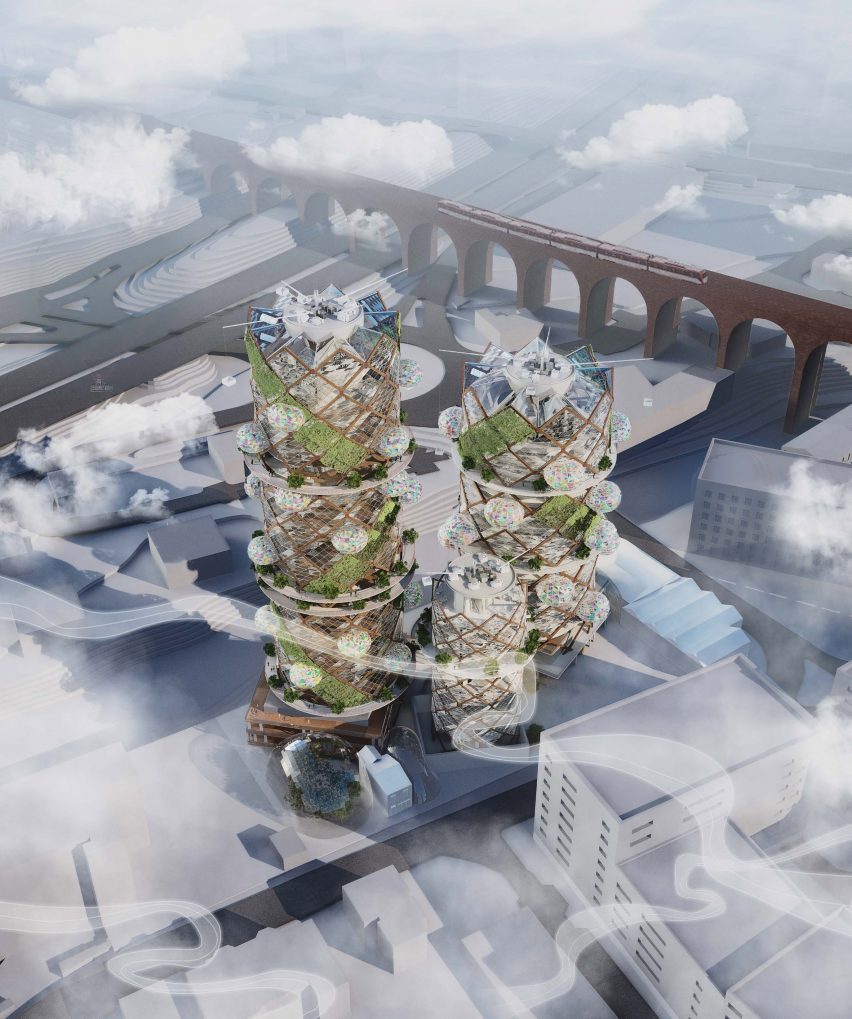
Spheres of Visionary Thought by Htein Lin
"Atelier [CPU] focuses on building designs within systems of the city – this year's projects explored themes of vocational training and digital fabrication and their future within the Greater Manchester region.
"Projects began with creative experimentation in morphology and spatial effect using material, digital and hybrid methods, alongside exploring design theories and frameworks.
"Htein's project draws inspiration from Peter Sloterdijk's book 'Spheres', which proposes that human existence fundamentally resembles bubbles, with individual ones existing within larger shared bubbles of concerns.
"In our fast-paced era, many feel overwhelmed by progress and a growing sense of disconnection from the broader community: the shared bubble sphere – this is reflected in anxieties of being replaced by the tool with the rise of AI.
"This project, integrating the playful form of bubbles and their nature of emerging, expanding and popping into in an architectural context, comments on the critical need for a large community space where individuals can unite, exchange ideas and feel connected."
Student: Htein Lin
Course: BA3 Atelier [CPU]ai
Tutors: Matt Ault, Rob Hyde and Dan Newport
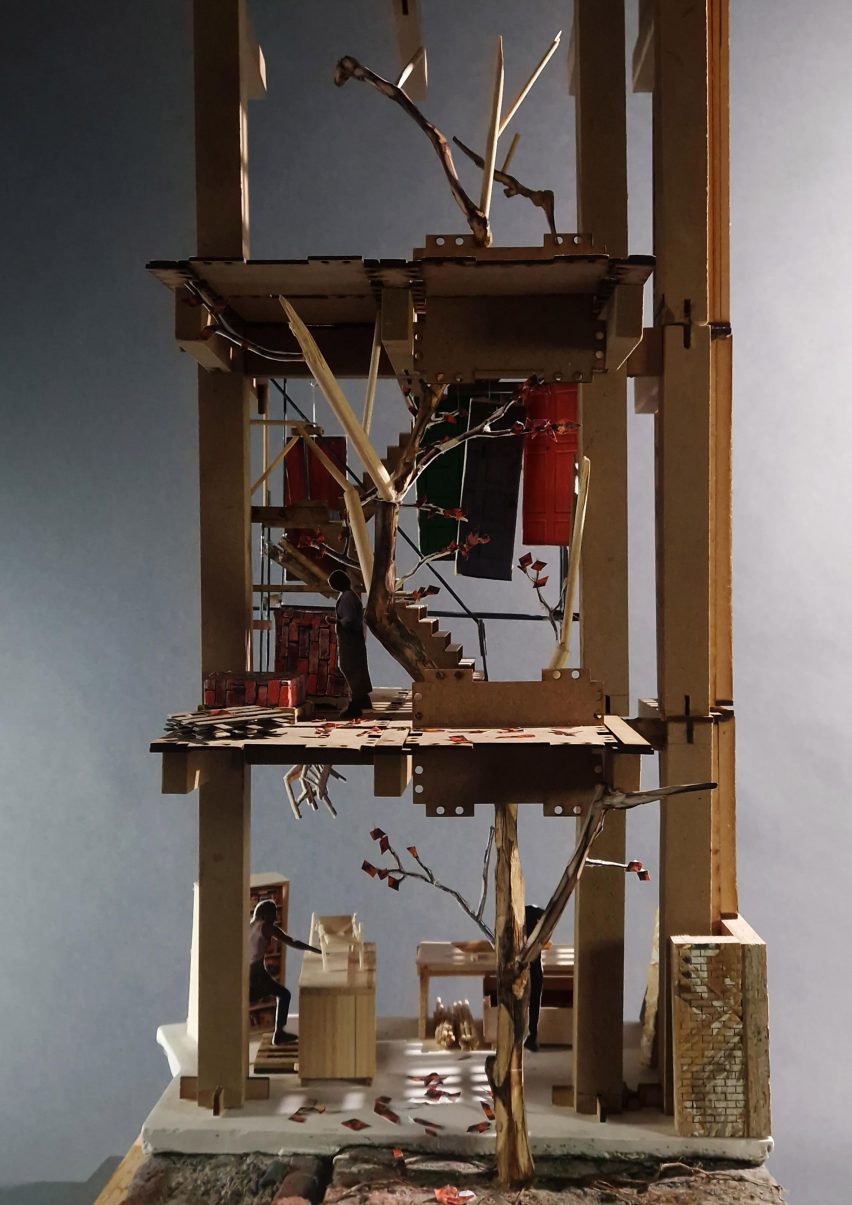
Deciduous Materials by Seth Benn
"Seth Benn's projects embrace Manchester in a state of change – inspired by Tyrone's Junkyard, he immersed himself in FLUX situated practices by exploring found objects and their possibilities.
"The project aims to assume ownership of unwanted materials and objects that can be stored and repurposed, demonstrating how discarded items can be woven back into the fabric of Manchester.
"The site has 32 beech trees and intertwines an architecture of found objects from the city in the process of being remade.
"The building series continually reassembles through a process of transfer, where waste becomes building fabric, temporarily stored, and displayed, to ultimately be selected, disassembled and taken back into domestic and commercial projects in Manchester.
"FLUX focuses on establishing a state of change – each student assumed ownership of 1 of 20 sites to develop a unique architectural proposition – projects spanned themes of material savage, protest and play, and together, they formed an archipelago of projects named Reconnecting Mayfield."
Student: Seth Benn
Course: BA3 Atelier Flux
Tutors: Amy Hanley and Vilius Petraitis
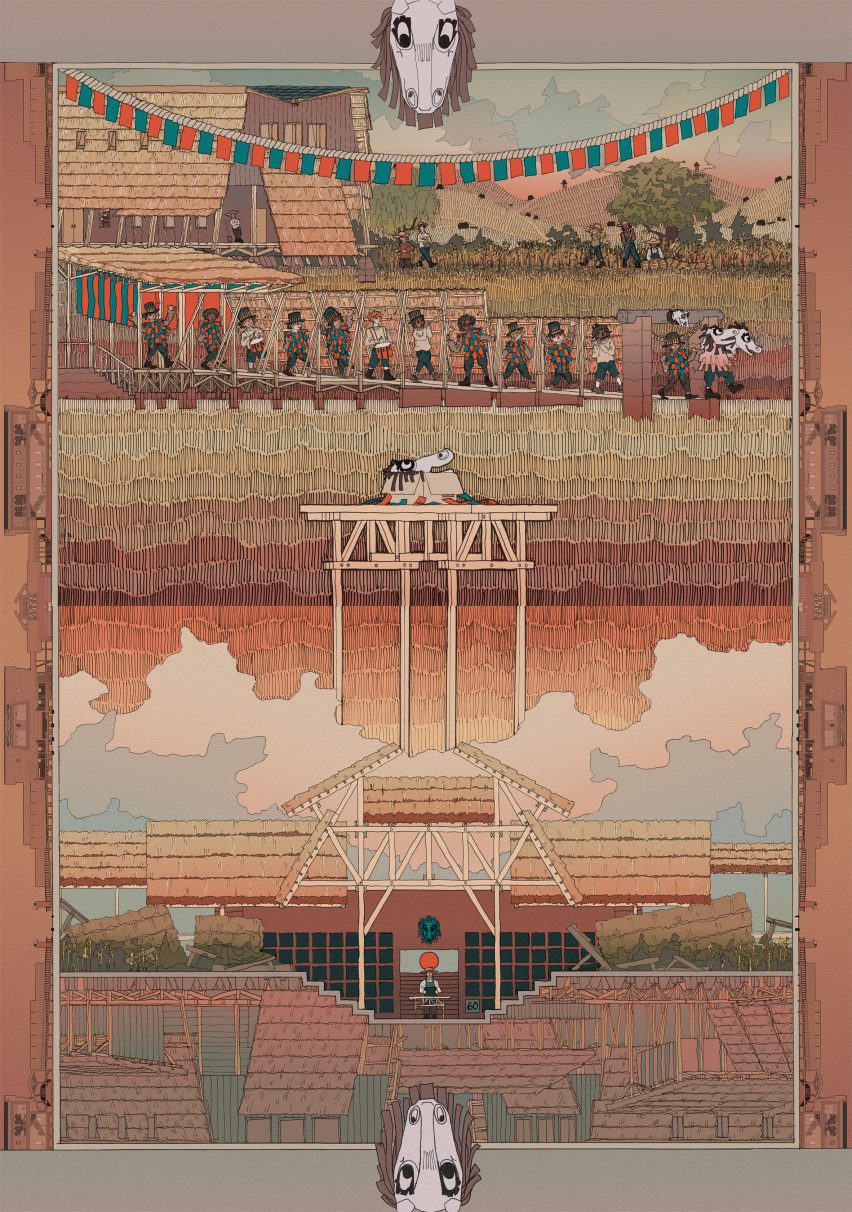
The Mythos of the Peatland Archive by Gordon Wu
"The west coast of Britain was once covered in a vast rainforest – 6,000 years of human extraction have all but eliminated them, leaving behind a scarred landscape.
"People have gone, villages built and raised, all in the blink of an eye of geological time – but peer into the peat bogs, and you will find a record of memories: the slowed decomposition of organic matter has created a deep soily archive below the surface.
"The Mythos of the Peatland Archive proposes breaking apart an asphalt car park in Cleator, Cumbria, remediating the landscape into peatland and constructing a 'village of restoration' to open the portal to a subterranean archive.
"Integrating the mythologies and folklore of the British wetlands, the project is presented as a series of chapters, following its inception from a band of restoration nomads, its construction from pluricultural material, its use in community ritual and finally its decay back into the landscape that birthed it.
"After a century, a human lifetime and a millisecond for earth, all that remains will be fields of reed and typha, dotted by remnant archives below the ground, sinking deeper into time."
Student: Gordon Wu
Course: BA3 Atelier Infrastructure Space
Tutors: Dragana Opacic Wilkinson, Neil Allen and Nick Nilsen
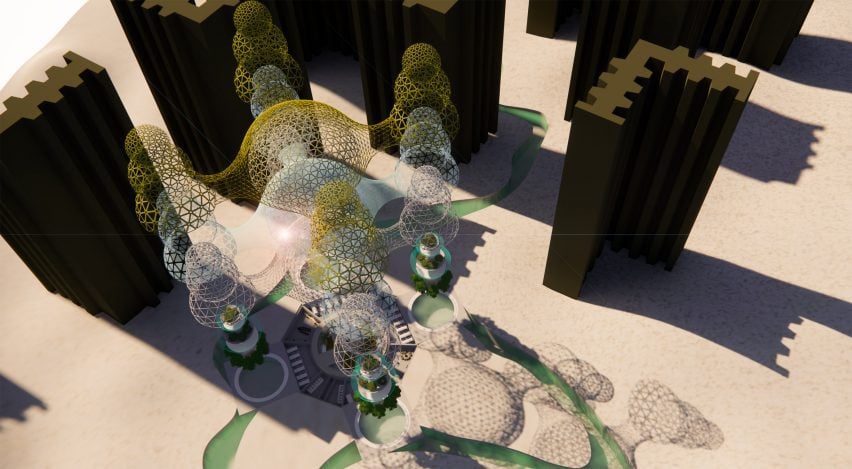
Nidus Factory by Munir Sharif
"Praxxis is a female-led, cross-disciplinary teaching atelier investigating architecture, landscape architecture and urban design – we take an inclusive, socially driven approach through the lens of intersectional feminism to explore societal inequalities and their implication for the built environment.
"By defining a project from a personal position and placing it within a political context, projects often result in the re-definition of systems – the project subject this year was to challenge the dominant theme of a socio-political 'factory'.
"As a testament to feminism in the Middle East, the Nidus Freshwater Factory champions gender equality and women's empowerment through its inclusive design and community-focused initiatives.
"Imagining a future scenario in the year 2075, New Babylon, formerly Baghdad, has transformed into a subterranean metropolis due to impacts of climate change and ongoing conflicts with depleting oil reserves.
"The Nidus Factory is a sustainable architectural project designed to address water scarcity and promote social equity. Situated in the middle of a river meander loop, the factory utilises innovative desalination techniques with mangrove biospheres housed in geodesic domes through bioremediation and ensures equitable access to water."
Student: Munir Sharif
Course: BA3 Atelier Praxxis
Tutors: Roxanne Kanda, Victoria Adegoke and Rachel Newton
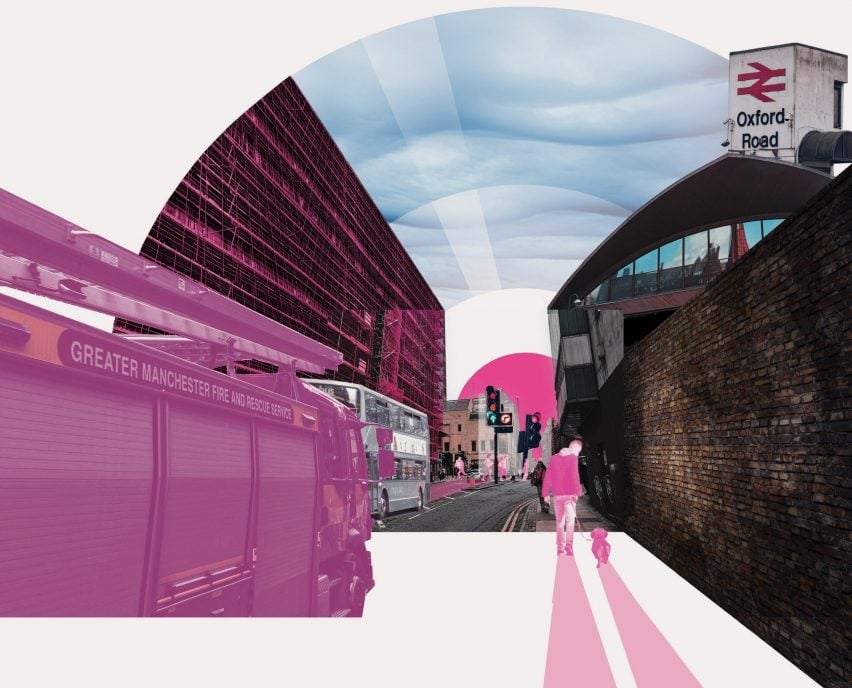
Untitled by Nicolas Qi Zheng Ho
"Upon stepping down the steeply sloped brick road gushing down into a busy junction below, Oxford Road fills the body with motion; the clouds roll endlessly like standing waves above.
"Schools of people, guided by unseen currents, seemingly drift towards their destinations – the diligent fresh adults trudging towards their lecture halls, the tireless career woman/man seeking solace in their sorrowful, scantily short luncheons.
"The binary moons guiding this tide of bodies; a tandem set of traffic lamps whose lights command the mildest of dachshunds, to the ever reliable 142 bus.
"A driver paused patiently as he takes deep draws of nicotine, puffing clouds of regret, the sirens of a vibrant crimson red fire truck blare on as it slips by, echoing off the brick-laden arches covered in decades of soot and neglect; not a care was paid to where it was headed.
"The claddings of a bygone era: ripped away from buildings; the dead skin of heritage forcefully extracted from its carcass as it is swarmed by an obnoxious fuchsia mass of scaffold and tarping."
Student: Nicolas Qi Zheng Ho
Course: BA2 Humanities
Tutors: Dr Demetra Kourri and Dr Angela Connelly
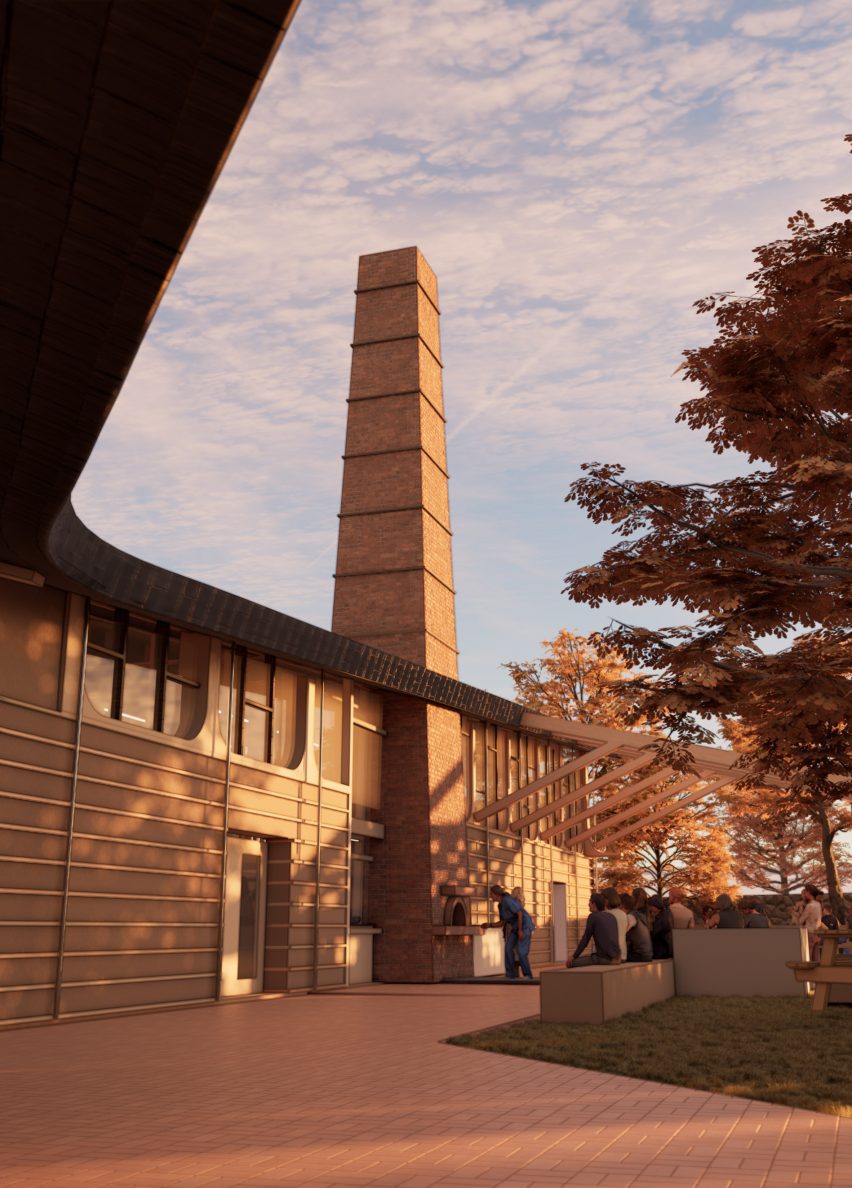
Northenden Community Hearth by Siôn Lewis
"Located in the suburb of Northenden, Manchester, the scheme is centred around the concept of a community oven and follows the course's agenda of inclusive and sustainable development.
"Inspired by the historical tradition of village bakehouses, the scheme aims to reinvigorate the past cultural practice of communal cooking and baking, bringing it into the modern world and, in turn, creating a more environmentally and socially sustainable future – and a place of warmth where all the people of Northenden can come together to celebrate their community.
"The central oven design is a homage to traditional industrial chimneys, its conventional appearance standing in contrast to the scheme's core ideals; it houses a heat recovery system that recaptures any excess heat produced by the oven and redistributes it into the building's services, through pipes that heat the outdoor seating.
"The remainder of the building is constructed of timber and rammed earth, aiming to be low-carbon and community-driven – by inviting members of the community in Northenden to help construct the rammed earth blocks, a sense of stewardship will be instilled in the end users of the space."
Student: Siôn Lewis
Course: BA3 Atelier Some Kind of Nature
Tutors: Kasia Nawratek and German Nieva
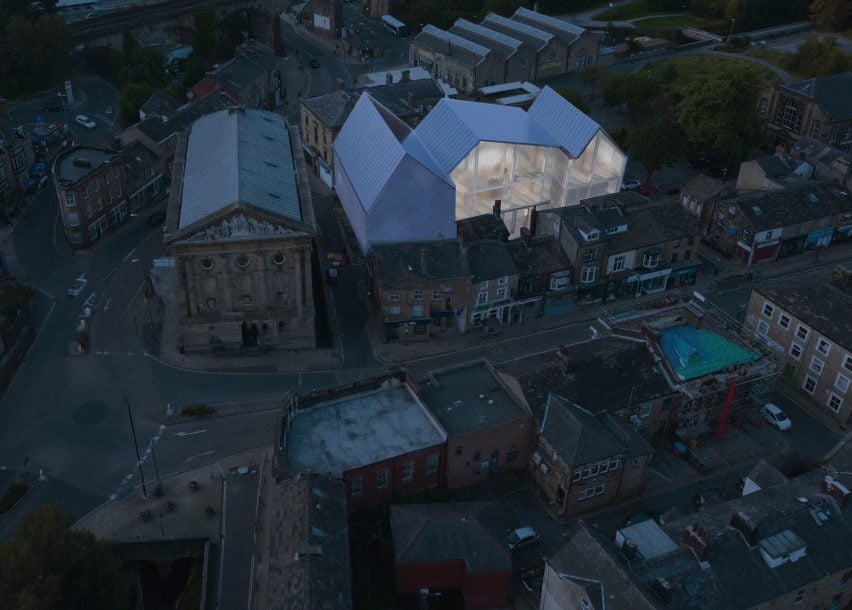
Continuity in Architecture by Ella Cowie
"Continuity in Architecture focuses on how the design of new buildings and public spaces work within the context of the existing urban fabric.
"This year, BA3 explored the small market town, Todmorden, which has a rich industrial textile history, aiming to design a new library, starting with an investigation of experience and place based on Gordon Cullen's Serian Vision (1961).
"The new library promotes a strategy that establishes a relationship with history, topography and the culture of the community in Todmorden, with an insight into the building's future – the architectural typology of previous textile weaving mills, once located on the site, emulated through its form and roofscape.
"Elements of the building further reflect the rich history of the town – the library appears as a contemporary form which sits organically in Todmorden, the pitched roofscape of the library connects to the wider site and is aided by the choice of materiality for the façade – the building a form which is able to grow with a changing future, but situated in a town which is closely linked to its past."
Student: Ella Cowie
Course: BA3 Atelier Continuity in Architecture
Tutors: Johnathan Djabarouti, Mike Daniels and Victoria Jolley
Partnership content
This school show is a partnership between Dezeen and Manchester School of Architecture. Find out more about Dezeen partnership content here.